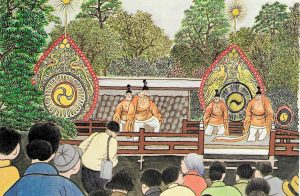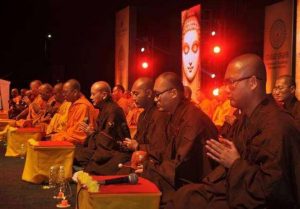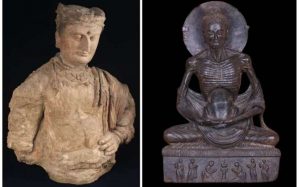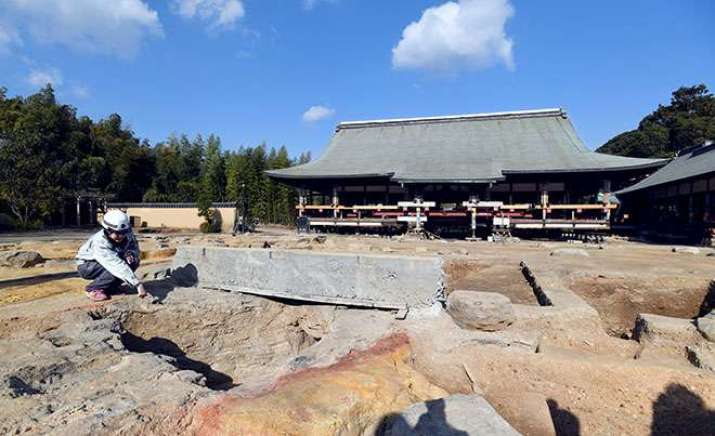
Archeologists in Japan have discovered an ancient kiln within the grounds of Toshodai-ji, a temple complex in the former Japanese capital of Nara. The kiln is thought to have been used to make the tiles used for the roof of the temple and the researchers say the discovery affords a unique glimpse into the ancient building techniques and craftsmanship used to construct Toshodai-ji some 1,250 years ago.
Toshodai-ji was founded in 759 by the Tang dynasty Chinese monk Jianzhen (Jpn: Ganjin), and was the first temple built in Japan for a Chinese Buddhist tradition, being affiliated with the Nanzen school of Buddhism. Today, it is the headquarter of the Risshu, one of the six schools of Nara Buddhism in Japan, who see Ganjin as their founder.
Researchers from the Archaeological Institute of Kashihara said it was likely that the ancient kiln was used to bake roof tiles for the temple’s main hall (kondo), and other structures in the UNESCO World Heritage site.
“The tile kiln was likely set up on the temple grounds during the final stage of construction of the kondo, east pagoda, and other buildings,” said Michio Maezono, a professor of archeology at Nara College of Arts. “Toshodai-ji is not a large publicly commissioned temple, so those facilities could have been erected gradually over dozens of years.” (Asahi Shimbun)
The remains of the kiln—a traditional type of oven that has been used for centuries to bake pottery, tiles, and bricks—which measured 4.2 meters by 2.2 meters, were excavated under the mieido, a building that houses the miei (sacred image) of the temple’s founder, Ganjin, located in the north of the complex.
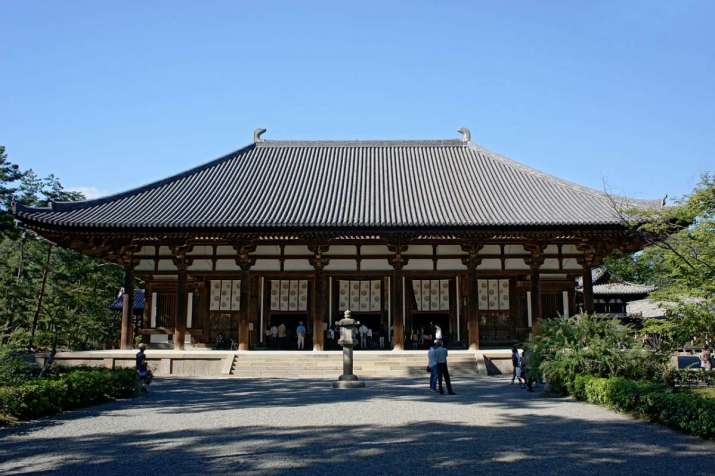
Ganjin was a high-ranking monk from China who was invited to teach the Chinese Buddhist precepts in Japan by Emperor Shomu, the 45th emperor of Japan and a devout Buddhist who installed Buddhism as the state religion. When, after many ordeals, Ganjin finally arrived in Japan, he first established his school at Todai-ji, a temple built by Emperor Shomu. After five years, however, he decided to establish his own temple and was granted the site of the former residence of the son of Emperor Tenmu (the 40th emperor of Japan), Prince Neetabay Shin-no, by Emperor Junnin, the 47th emperor of Japan.
Toshodai-ji consists of a number of buildings, the majority of which were build over a period of 50 years during the late Nara Period (710–784) and early Heian Period (794–1185). The most notable is the main hall, also known as the “Golden Hall,” a single-story building with a hipped tiled roof (a roof where all the sides slope gently downward to the walls) and eight rounded pillars that reflect the continental influence in the architectural style. The hall is considered an archetype of classical Japanese architecture, and is the only surviving example of this 8th century type of architecture in Nara.
Other notable structures include the kodo, or lecture hall, which was originally constructed as an office building for the imperial court, also during the 8th century, and is the only element of the old imperial estate that remains, the hozo or Treasure House, the kyozo or Sutra Storehouse, and the Koro, the only multistoried building in the complex, which was rebuilt in the 13th century.
Ganjin died in 763, but construction of the complex continued for many decades. The last building to be added was the East Pagoda, which was completed in 810. The temple complex is five kilometers west of the city of Nara, in the district of Gojo-cho, but was originally located at the center of the city when Nara served as Japan’s capital.
See more
Researchers fired up after finding kiln for ancient temple (Asahi Shimbun)
An introduction of Toshodaiji Temple (Toshodaiji)
Paradigms of Nara Architecture (Japan Experience)


